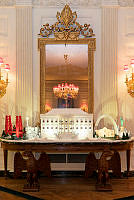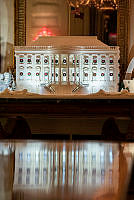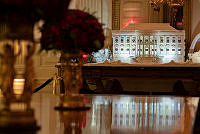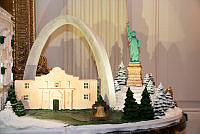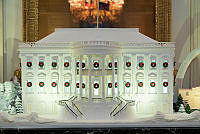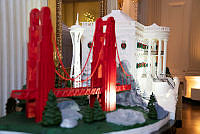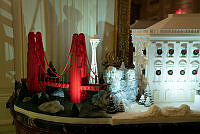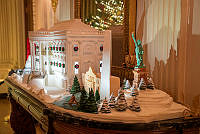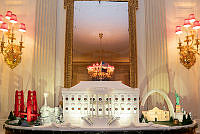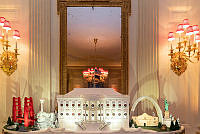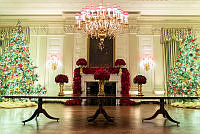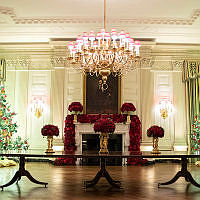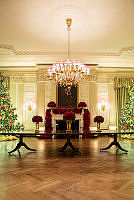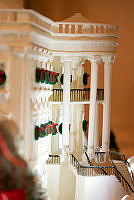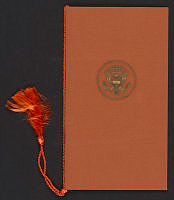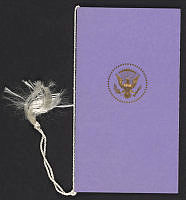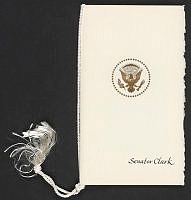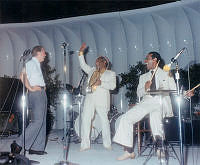Rubenstein Center Scholarship
Sicilian Salvador Catalano
An American Naval Hero

This artwork shows the capture of the USS Philadelphia by Barbary pirate gun boats. The Philadelphia became vulnerable when she ran into an unchartered reef, listing and unable to fire upon the attacking ships.
Library of CongressFew people today know the story of a Sicilian-born sailor named Salvadore Catalano who became an early American naval hero. During the First Barbary War (1801-1805) against the North African states of Morocco, Tripoli, Algiers and Tunis, he was a critical player in a secret mission now fabled as one of the most courageous actions in American naval history. Catalano would pilot the Intrepid for Lieutenant Stephen Decatur’s now famous destruction of the captured USS Philadelphia in Tripoli Harbor in 1804. While chasing an enemy vessel the frigate had run aground on an uncharted reef about two miles outside Tripoli Harbor. Listing badly and unable to fire the starboard guns, Philadelphia was captured and pulled off by the Barbary pirates into port and its officers and crew imprisoned. It was a humiliating defeat and posed a real danger to American warships in the Mediterranean Sea.1
Salvadore Catalano was a native of Palermo, Sicily and probably born in 1767. By the outbreak of the First Barbary War, he was an experienced Sicilian sailor with fluency in the language of the Barbary Corsairs, and enough English to communicate with his American commanders. He joined the Intrepid crew under the command of Lieutenant Decatur in 1804.2 Catalano’s composure and his knowledge of the reefs and shoals of Tripoli Harbor would be essential to the mission.

An 1804 plan of the town and harbor of Tripoli used by American sailors. Maps such as this were instrumental to American Navy officers operating in the tricky Mediterranean waters near Tripoli.
Library of CongressDecatur in December 1803 had captured off Tripoli the four-gun enemy ketch Mastico and used the opportunity to make a reconnaissance pass of the Tripoli Harbor, taking note of the number and position of gun batteries and the location of the Philadelphia. On his return to Syracuse, Sicily where the squadron was docked due to foul weather, Decatur made the request of his squad commander, Commodore Edward Preble, to lead the mission to destroy the Philadelphia.3
Preble had resolved to destroy Philadelphia after her capture and considered several options before ordering Decatur to take command of the Tripolitan prize ketch. Preble renamed her the Intrepid—an allusion to the danger of the mission—and personally assigned five midshipmen. However, most of the attack force and surgeon that came were sailors and Marines who volunteered from vessels in the squadron, numbering 75 men including the pilot, Salvadore Catalano. Supported by the brig Siren, the two vessels reached Tripoli harbor on February 7. However, before the American ships could launch their attack, they were driven off by a violent winter gale and did not return to Tripoli until February 16.4

The burning of the Philadelphia as seen from Tripoli harbor. Despite the increased alarm, Decatur, Catalano, and the crew of the Intrepid received only light cannon fire as they escaped the port.
Naval History and Heritage Command/Courtesy of the Naval Historical Society of New YorkThe mission to destroy the Philadelphia was perilous. Catalano recalled Tripoli harbor’s defenses, noting the Philadelphia had guns that could be trained on the ketch, there were another 150 guns within the defensive shore batteries, and moored nearby were three Tripolitan cruisers mounting together 26 guns and 19 gun boats fully manned and ready to attack. Most of the men were hiding below deck except Decatur and Catalano and two or three officers to represent the ketch’s crew, as the Intrepid slowly made its way on a light breeze through the complex shoals and reefs of Tripoli harbor toward the Philadelphia.5
Corsairs on board the Philadelphia hailed Decatur, but it was Catalano who answered and explained they had lost their anchors in a gale and asked to run a warp to move the frigate alongside until anchors could be obtained from the shore. Then the Corsair captain asked about a brig he could see off in the distance. The Siren had been brought closer to the harbor than planned and was sighted. Catalano had to think quickly and identified the vessel as the Transfer, a British man-of-war, purchased by the Tripolitans in Malta that was expected at Tripoli.6

The USS Intrepid and its crew escaped from Tripoli harbor as the Philadelphia burned, their mission accomplished with only one man wounded.
U.S. Naval Academy Museum Collection/Official U.S. Navy PhotographCatalano kept the conversation flowing, buying time for the Intrepid crew to attach ropes to the Philadelphia to pull the vessels together. The Corsairs on board the Philadelphia became suspicious and realized this might be an attack, shouting: “Americanos.” Once the alarm sounded 60 men from below Intrepid’s deck rushed out to join the fight with Decatur in the lead while the rest stayed on board to defend the ketch. Caught by surprise and unprepared for the ferocity of the American attack, the Corsairs lost 20 men, a wounded sailor was taken prisoner, and the rest jumped into the harbor. There were no American casualties, with one wounded. The parties assigned to fire the ship did their work well and soon there was a sharp crackling of flames and plumes of smoke billowed from the ports and hatches. Decatur ordered his men back and was the last man to return to the Intrepid to make their rendezvous with the Siren, ready to fend off any counterattack. None came, as the Corsairs had been stunned by the stealth and surprise of the mission.7 In the official report of the action, Decatur related how relatively easy it had been to leave the harbor with light cannon fire with only one ball that passed through a sail. He glowingly praised the officers and crew and then stated: “It would be an injustice in me to pass over the services of Mr. Salvadore, the pilot, on whose good conduct the success of the enterprise in the greatest degree depended.”8
Catalano came to the United States in 1805 and according to the Daily National Intelligencer (Washington, D.C.), was admitted to the U.S. Navy as a reward for this brave and heroic service, on the recommendation of Captain Stephen Decatur.9 Catalano became a naturalized American citizen and the U.S. Navy appointed him Master of Sails at the Navy Yard in 1809, a position he held until his death in 1846. Catalano settled in the residential neighborhood adjacent to the Navy Yard and in 1813 married Martha Carbery from a devout Catholic family.10 Her brother Thomas Carbery was a well-known figure in the nation’s capital as the president of its largest bank, Washington National Bank, and as mayor of Washington from 1822-1824.11

Stephen Decatur, the American naval commander tasked with leading the raid on the Philadelphia. In his official report after the attack, Decatur praised Catalano, “whose good conduct the success of the enterprise in the greatest degree depended.”
Library of CongressDuring the War of 1812 Catalano became embroiled in the Ewell-Goldsborough quarrel. Chief Clerk of the Navy Charles W. Goldsborough had a long history of contract squabbles with Thomas Ewell, a medical doctor who owned a gunpowder mill in Bladensburg, Maryland. Goldsborough had taken issue with the quality of Ewell’s gunpowder. Catalano, as part of his duties at the Navy Yard, tested the gunpowder used by the Navy. Goldsborough praised Catalano as a “gentleman of great integrity & patriotism,” and “That Mr Catalano, who is a very honest man & a very competent judge, does from these & other facts known to him, verily & sincerely believe that the Powder which has been sent on board of the Constellation is entirely unfit for use.”12 Ewell responded by asking President James Madison to have the gunpowder tested immediately by another experienced officer as delays in proving the gunpowder was ruining his business.13 He expressed his venom toward Catalano in his letter to President Madison, “This man so acting—a foreigner—at first in the service as a common Sailor—ignorant in the extreme—after showing an infamous disposition towards me—is directed! by Mr. Jones the Secy. of the navy to attend for the trial of my powder…”14
As the controversy warmed up, Catalano sought the counsel of his brother-in-law Thomas Carbery, who relayed to Goldsborough that Catalano would only respond to a written summons, fearing he might otherwise lose his post. Ewell had powerful connections, including Commodore Thomas Tingey, superintendent of the Navy Yard. Goldsborough suggested to President Madison that he call for Catalano and hear his testimony. On the evening of January 21, Catalano presented his case for grading the powder as inferior to President Madison at the White House. Four days later Navy Secretary William Jones sent a letter to the Constellation’s captain Charles Stuart that the powder was in doubt and not to proceed to sea until reproving.15

George Cooke’s 1833 painting, City of Washington from Beyond the Navy Yard, depicting the Washington Navy Yard during the time of Catalano’s employment as Master of Sails.
White House Collection/White House Historical AssociationIn 1819, Catalano was badly injured in an accident at the Navy Yard when an iron bar struck his body and severely damaged the function of his kidneys for the rest of his life.16 The Catalano household in the 1820 and 1840 censuses included Salvadore, Martha and a free African American woman, presumably a live-in maid.17 Catalano also had a son, Antonio, who either came with him to America in 1805 or he found passage at a later date. By 1820 Antonio was married and had gained employment at the Navy Yard as a carpenter.18 Neither Salvadore nor Antonio had issue.19
In 1900, a local historian described the old Navy Yard community and presented a brief biography of Catalano that concluded: “Mr. Catalano was not a man of great culture or wealth; nor was he prominently identified with public affairs; but he deserves to be remembered because of his connection with one of the most notable exploits the history of our country.”20 That notable exploit was the burning of the Philadelphia in Tripoli Harbor that led to hero status and a new life in America for a humble Sicilian sailor and opened the path of glory to one of America’s legendary naval officers.













